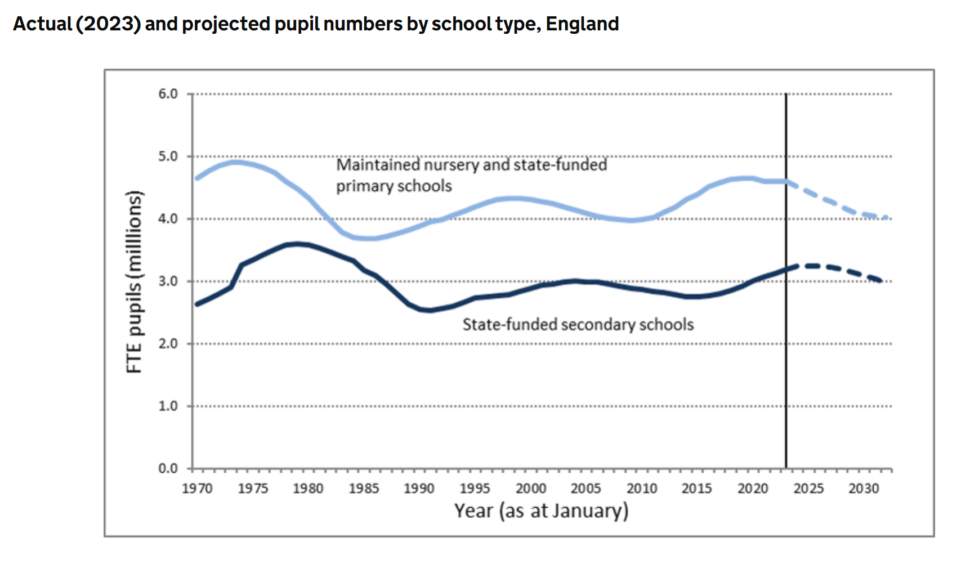The government has revised up its pupil number projections after this year’s school census found more primary school pupils than previously forecast.
Last year’s pupil number projections forecast the state school population was due to fall by 12 per cent to 6,915,000 by 2032.
Today’s figures revise up that estimate by 214,000, and predict pupil numbers will shrink to 7,129,000 by 2032, which is still a drop of around 10 per cent from this year’s total of 7,931,000.
Primary pupil numbers have been falling for several years as a result of a decline in the birth rate following a baby boom in the 2000s. That population bulge has now moved into secondary schools, where numbers will peak next year before falling.
The Department for Education said population estimates from 2012 had been updated to take account of the 2021 census, making it “harder than usual to identify specific reasons for the difference between these two projection models”.
More primary pupils than expected
But one reason “could be the results of the 2023 school census, which showed higher numbers in primary school than had previously been forecast”.

Falling pupil numbers are already creating problems for primary schools, especially in areas like London where Brexit and rising housing costs are driving emigration.
Schools Week revealed earlier this year how Lambeth council is considering merging up to 16 of its primary schools as plummeting pupil numbers threaten the viability of education in the capital.
And earlier this month, we reported that Hackney council faced legal action from parents over plans to close four primary schools because of plunging pupil numbers.
Today’s data shows the DfE expects the primary school population to fall from 4,567,448 this year to 3,990,359 in 2032, a fall of around 13 per cent.
The secondary population is due to rise from 3,193,260 this year to 3,244,230 next year, before falling to 2,975,475 in 2032, 7 per cent lower than 2023 levels.



Your thoughts